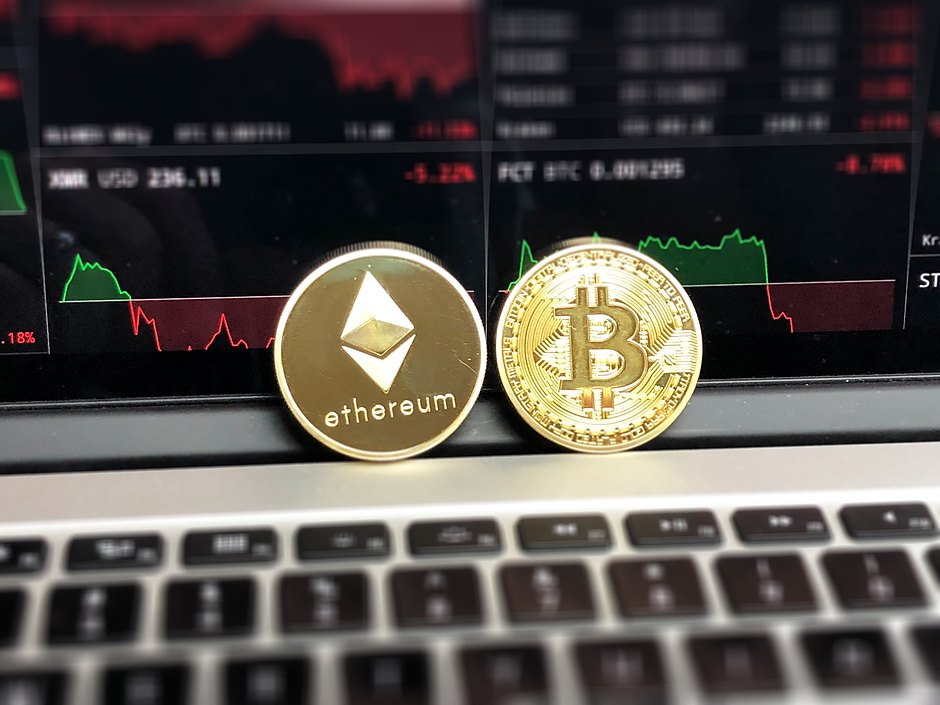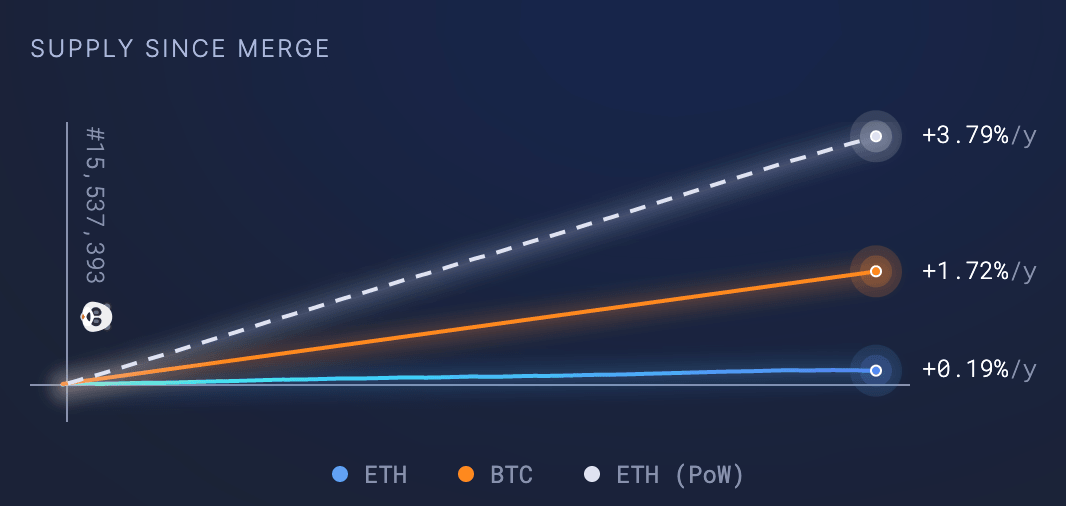Ethereum Merge vaults cryptocurrency past Bitcoin in hard-money allure

Ether’s drastic reduction in the net inflation rate is attributed to the elimination of mining rewards and the “burning” of transaction fees, experts said.
Ethereum won plaudits and the spotlight two weeks ago for smoothly pushing through its much-hyped Merge, a historic shift to a different “proof-of-stake” blockchain system designed to drastically reduce energy consumption – roughly 99% by some estimates.
Now, the second-biggest blockchain appears to be proving itself on another promise of the Merge: greater inflation-resistance, a characteristic that’s usually more closely associated with Ethereum’s bigger and better-known rival, Bitcoin.
In the days since the Merge, the annualized net issuance rate of Ethereum’s native cryptocurrency, ether (ETH), has fallen to a range of 0% to 0.7%, estimates Lucas Outumuro, head of research at crypto data and analysis firm IntoTheBlock. That compares with about 3.5% prior to the Merge. The net issuance rate, also referred to as the inflation rate, is essentially the new supply divided by the existing supply.
The website Ultra Sound Money puts the annualized inflation rate at 0.19%, based on data showing that some 8,100 ETH have been added to ether’s total supply since the Merge.
In a world where central banks worldwide are struggling to contain inflation – in the face of trillions of dollars of money-printing and severe supply-chain bottlenecks – Ethereum’s reduced issuance rate might help to bolster its appeal among investor in crypto and traditional markets alike.
For comparison, Bitcoin’s net issuance rate is currently about 1.75%, according to Woobull.com. The Federal Reserve has doubled the size of its balance sheet since March 2020 to about $8.9 trillion.
“The level of new tokens coming onto the network has substantially reduced.” Simon Peters, a market analyst at the trading firm eToro, wrote in a note Monday.
The decline in Ethereum’s inflation rate comes from two factors: a reduction of new issuance as a result of the change in the underlying blockchain system, and a separate mechanism known as “EIP 1559” where fees paid for transactions on the network are “burned,” or eliminated from circulation.
Before the Merge, the issuance of ether’s proof-of-work (PoW) mining rewards was around 13,000 ETH per day, according to the Ethereum Foundation.
After the Merge, mining rewards disappeared, and staking rewards would theoretically amount to around 1,600 ETH per day – for a 90% drop in new issuance.
Chart shows Ethereum’s post-Merge inflation rate (blue line) versus Bitcoin’s (orange line) and a hypothetical rendition of what Ethereum’s would have been without the Merge (dotted line). (Ultra Sound Money)
Typically, the amount ETH burned depends on the base fee adjusted by the crowdedness of the data blocks on a given day. When there are more transactions, there is a higher base fee.
For ETH to flip to actually becoming deflationary at the current pre-burn issuance rate, the base transaction fee would have to be at least 15 Gwei, according to Daniel Kostecki, senior market analyst at the investment company Conotoxia. The transaction fee was around 10 Gwei as of press time, according to Ultra Sound Money.
The net inflation rate is still “higher than the deflationary ETH many anticipated,” IntoTheBlock’s Outumuro said.
The ether price slid about 5% in the past 30 days, trading just above $1,300 Tuesday as the broader macroeconomic environment has been struggling with high market volatility.
Ironically, according to Alexandre Lores, director of blockchain market research at Quantum Economics, future updates to the network might reduce fees, which could result in “a greater and inflating supply.”
“However, I expect that network growth will balance out this factor long-term,” Lores said, “and I am bullish on Ethereum as the premier decentralized application layer network in the world.”
Of course, Ethereum’s transition to the proof-of-stake system brought downsides – notably the risk that the new “staking yields” on the cryptocurrency might draw extra scrutiny from the U.S. Securities and Exchange Commission – since ether might start to resemble a bond.
The newfound inflation-resistance “may still be overshadowed by investors' fears about the SEC, which may finally recognize cryptocurrency as a security,” Conotoxia’s Kostecki said. “This could affect all projects that work on the basis of ETH technology.”
Even so, Kostecki said, Ethereum’s backers, led by Vitalik Buterin, are likely pleased with what the early data are showing in terms of the cryptocurrency’s supply rate.
“Investors’ confidence could be growing,” Kostecki said.
“If Ethereum becomes deflationary, we could see a lot of institutional money invested into ETH in the next couple of years,” said Maximiliano Stochyk Duarte, head of marketing at ChainPort and crypto investor since 2014.
“BTC will still be the best crypto for storing value without the huge volatility that the whole market has, but I think both ETH and BTC can play together if we want mass adoption,” he added.
Author

CoinDesk Analysis Team
CoinDesk
CoinDesk is the media platform for the next generation of investors exploring how cryptocurrencies and digital assets are contributing to the evolution of the global financial system.






